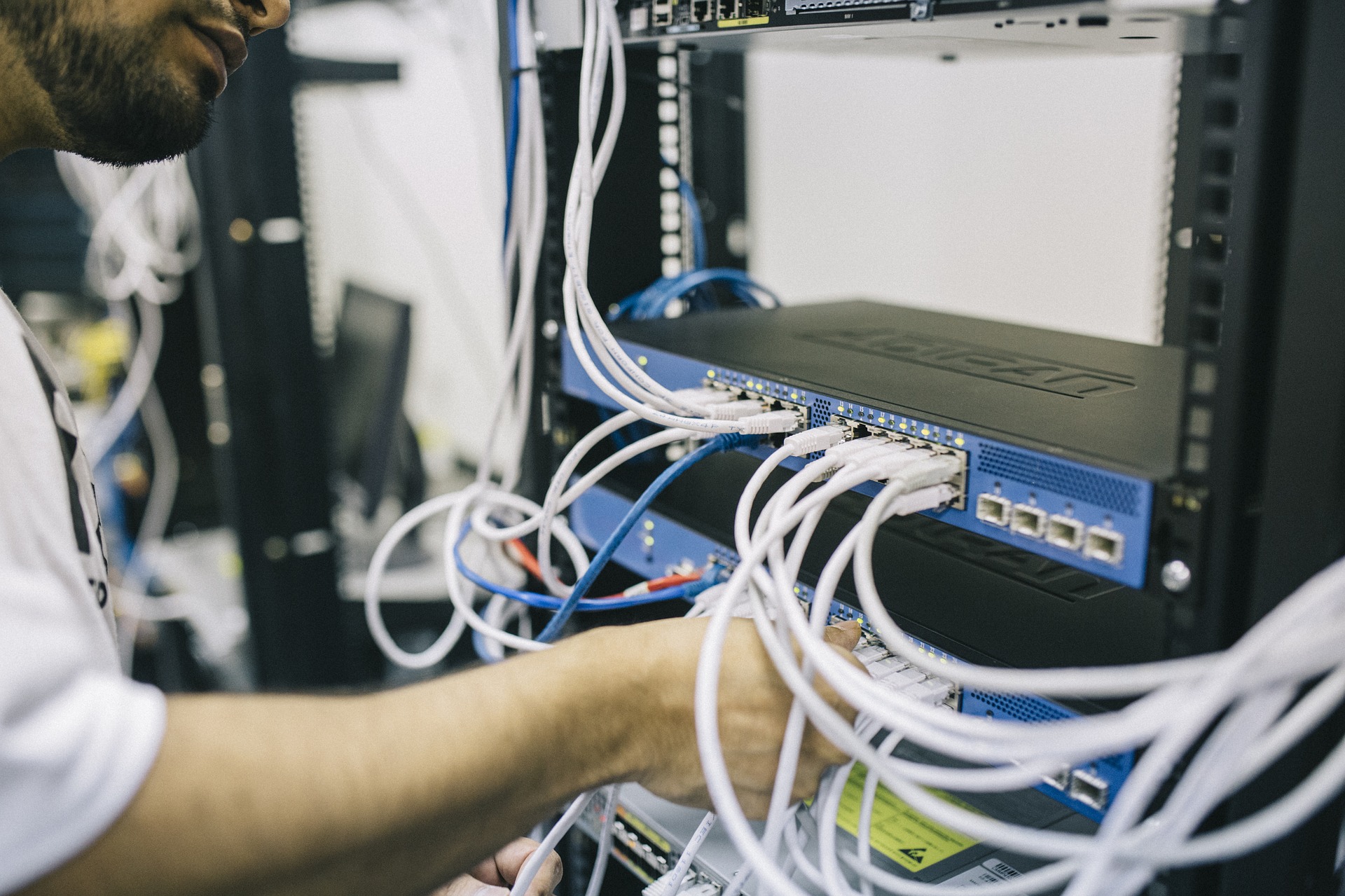Are you interested in learning more about the way computer networking works? If so, you could be a good fit for a Network Engineer role. The first step in the process is completing the Network Engineer program at CyberTex.
When you think about any computer system exchanging information with another system, you think about networking. It can cover everything from the infrastructure powering retrieval-augmented generation in AI models to the network devices you use to check on your home while on vacation. However, the sheer variety can also make it difficult to know exactly what element of computer networking you’re interested in on a professional level. So, let’s look into what computer networking is and how it works.
What is Computer Networking?
At a basic level, computer networking is simply the infrastructure powering communication between two or more computational devices. However, remember that the term infrastructure doesn’t just apply to physical items like wires, routers, or antennae. The infrastructure also applies to agreed-upon standards for digital communication. In human terms, this is equivalent to a person’s mouth and spoken language. Digital communication is an expansive field.
How Does Computer Networking Work?
Computer networking can be easily understood by thinking of it in terms of nodes and links. Nodes are the processing devices. For example, a computer is a common node. Links are the methods by which nodes communicate with each other.
Additionally, the nodes might use extra hardware, such as network interface cards (NICs), to process information from the links. The final part of the hardware is a networking device that acts as a middleman of sorts. These are the hubs, switches, modems, and routers. They might also connect. For example, the router in your home would need to communicate with a modem.
It’s this communication that provides the last piece of the networking puzzle. Networking protocols and services act as a language for networked devices. Some are simple, such as how an IP address points to a specific target destination on a local or remote node. Conversely, you’ll find more complex elements like the transmission control protocol/Internet Protocol (TCP/IP) stack and a full suite of communication protocols.
You’ll commonly see the interplay between the hardware and various protocols. Take Bluetooth, for example. Bluetooth is typically used to create a personal area network—a network focused on a single workspace. The most common example is using a phone to connect to headphones and keyboards or provide shared Internet connections.
If, for example, you were streaming music to your headphones, then your phone would act as the server. The server, your phone, would send and receive radio waves over the ultra-high frequency band. These waves would be encoded using the BLE, or Bluetooth low energy, protocol stack. The individual points of data would be sent in packets and contain header information to tell the receiving, client, and end how to use BLE to decode it and turn the results into your music stream. While this individual example is specific to Bluetooth, you’ll find that most computer networking follows this same general idea. Generally, clients, servers, and protocols define how the components speak to each other.
What are Some Other Computer Networking Terms?
You’ve seen how computer networking can be broken down into parts. However, you can better understand what computer networking entails by breaking those down even further into a list of computer networking terms. You’ll appreciate networking better once you’ve learned the following definitions.
LAN (local area network): Wired networks that communicate in smaller local areas such as homes or offices.
WLAN (wireless local area network): A subcategory of LAN that uses wireless communication, such as Wi-Fi, rather than wired connections between nodes.
WAN (wide area network): Networks that cover a wide geographic region. This is generally on the level of a country or even the entire world.
MAN (metropolitan area network): A large network, but still considerably smaller than WANs. A MAN is generally the size of a city.
PAN (personal area network): A network based on a single workspace or even an individual. For example, when you tether devices to your phone.
SAN (storage area network): A network primarily designed around the needs of file storage.
CAN (campus area network): CANs connect multiple LANs together to create a larger network. CANs are primarily used in academic settings like a university’s campus.
VPN (virtual private network): A VPN acts as a secure relay to make public networks, like public Wi-Fi, more secure.
Internet Control Message Protocol (ICMP): Primarily used for network diagnostics. Ping is one of the best-known examples.
Hypertext Transfer Protocol (HTTP): This communication protocol is the foundation for web traffic.
Dynamic Host Configuration Protocol (DHCP): This system assigns IP addresses, along with other relevant information, to devices added to a network.
Bridge: Typically used within the context of a LAN. It connects multiple segments within the network.
Cloud Networking: Leverages cloud-based technologies to manage networking services.
Client-Server Architecture: A hierarchy where the client devices request elements from a server.
Peer-to-Peer Architecture: A protocol that doesn’t have a hierarchy; each element is an equal peer.
Load Balancers: Balances the load of network usage over multiple servers so that there’s no single point of failure.
Nodes: The individual destination points in a network such as computers or routers.
Ports: Transmission points that allow or forbid movement within nodes. They also help to identify elements and their purpose.
Protocol: The rules and syntax that govern how elements within the network communicate. It’s similar to a language.
Routers: The devices which route raw data through the network.
Switches: Similar in some ways to routers but focused on use within a single network using MAC addresses.
FTP (File Transfer Protocol): Used to transfer files. Typically used between two computers.
SMTP (Simple Mail Transfer Protocol): The original network protocol used for email. While not the only one, it’s ubiquitous due to its longevity.
SNMP (Simple Network Management Protocol): As the name suggests, it’s a fairly barebones protocol that can be used to monitor and manage networks.
ARP (Address Resolution Protocol): The glue that binds IP addresses to MAC addresses.
Want to Learn More?
IT careers have become essential not just in Austin & Killeen but globally, and there is no better time to pick up than now. In 2021, Austin was ranked #1 in Best Tech City for IT jobs by CompTIA, and the demand is only growing.
Ready to start a rewarding and challenging career in IT as a cybersecurity specialist? The Cybersecurity Specialist Program at CyberTex prepares you for advanced computer networking and security jobs. You will learn the skills and abilities to set up, install, configure, repair, and manage modern computer networks and their security.
Contact us today to learn more about our Cybersecurity specialist program. Plus, learn how to land your first cybersecurity job.





